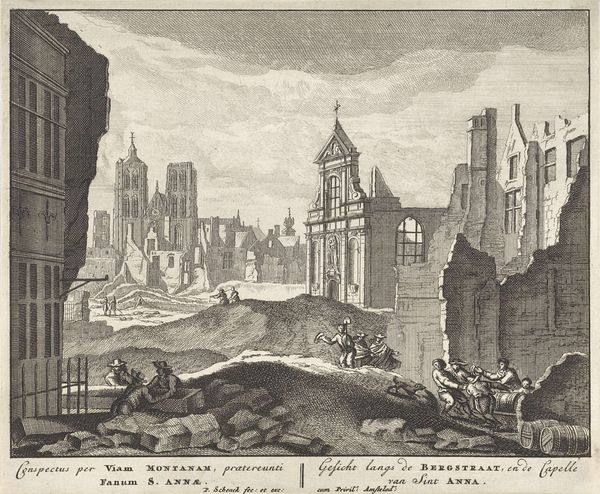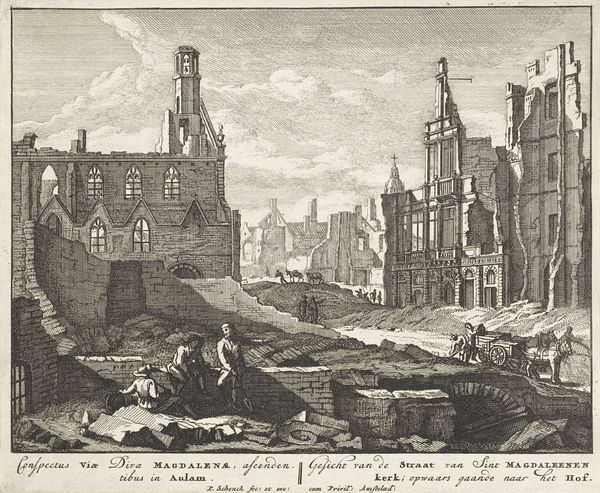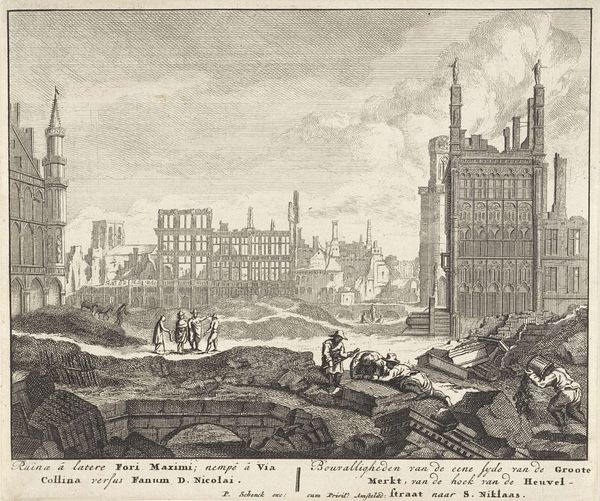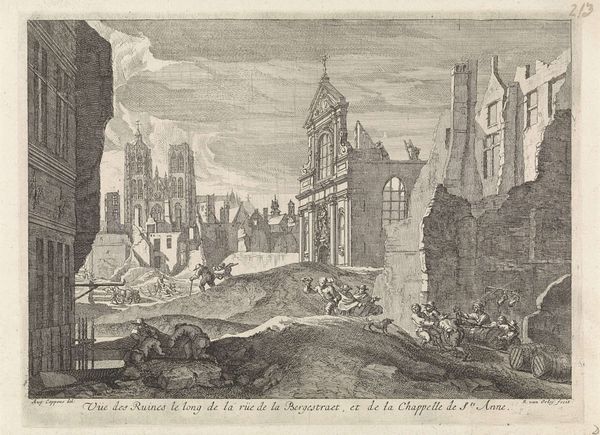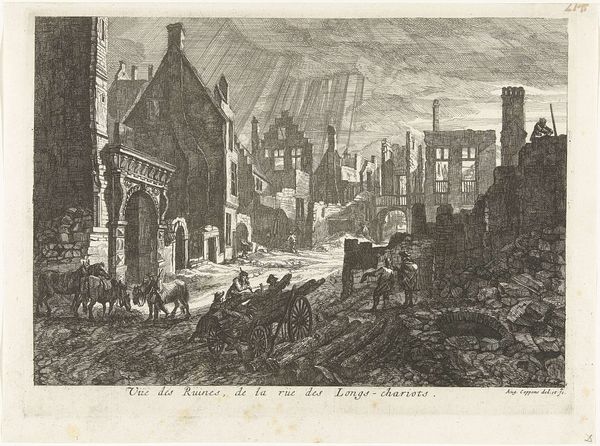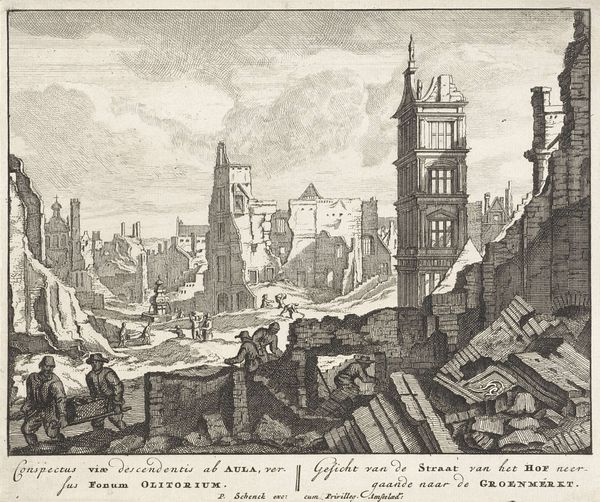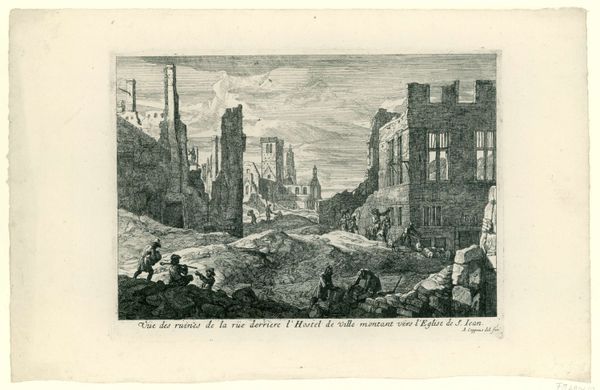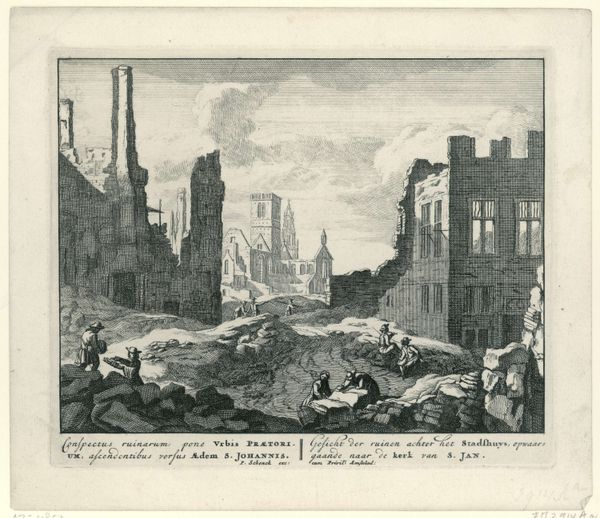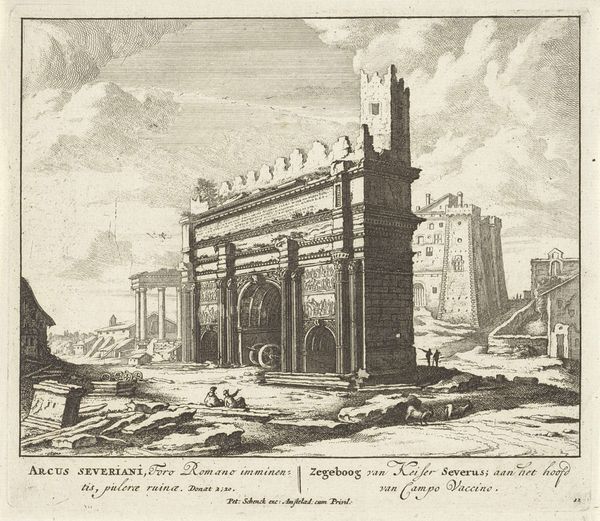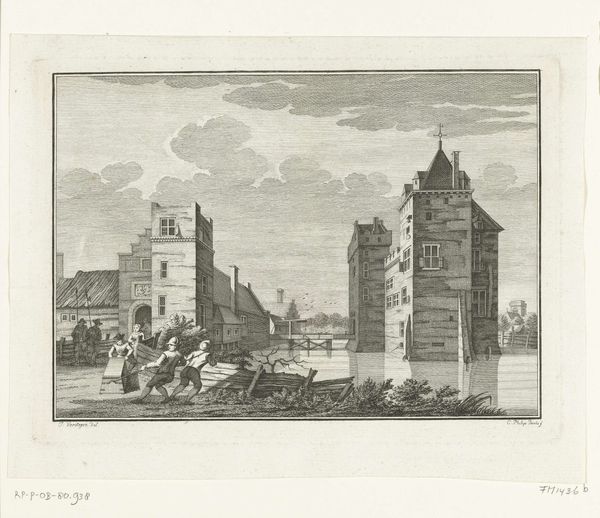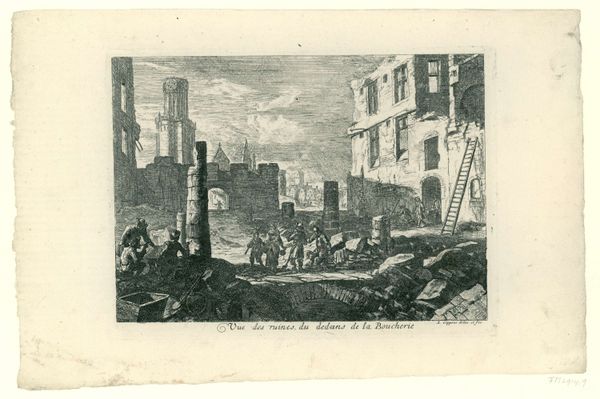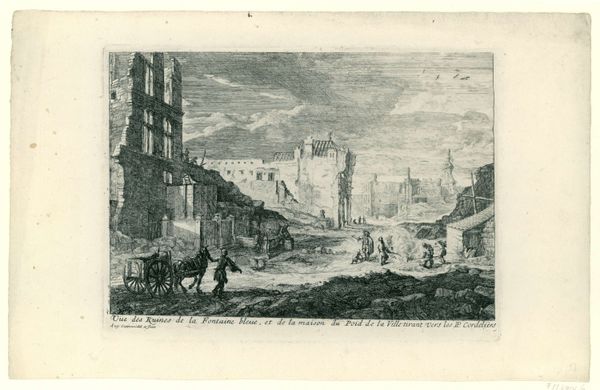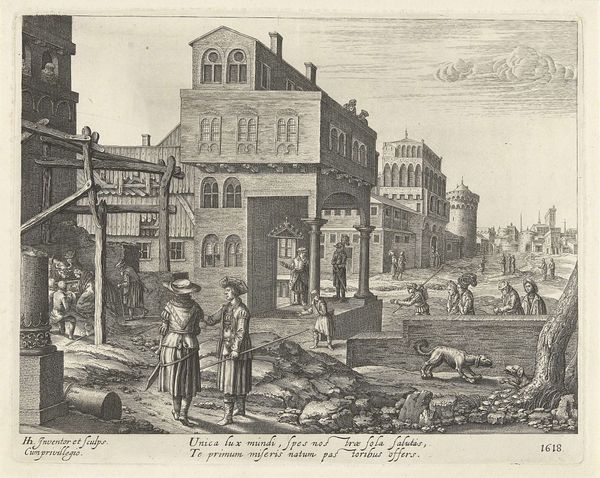
print, etching, engraving
#
baroque
# print
#
etching
#
landscape
#
cityscape
#
history-painting
#
engraving
Dimensions: height 165 mm, width 198 mm
Copyright: Rijks Museum: Open Domain
Curator: My goodness, what a desolate scene. It’s like staring into the aftermath of some terrible dream. The light feels...grim. Editor: Indeed. What you're perceiving, I believe, is the stark representation etched by Pieter Schenk between 1695 and 1711. It's entitled "Ruïnes in de Wagenstraat te Brussel, 1695"— Ruins in the Wagenstraat in Brussels. A historical record cast in print. Curator: Historical record? It feels so immediate. Look at the details! Those are people, right? Just going about their business amongst the… the skeletal remains of buildings. Editor: Precisely. This etching captures the destruction after the bombardment of Brussels by French troops in 1695. It speaks volumes about resilience amid devastation, reflecting upon military action through the lens of its impact on civilian life and infrastructure. Curator: It’s odd, isn’t it? The crisp lines of the etching versus the utter chaos portrayed. Like the artist is trying to make sense of it all, impose some kind of order… or maybe just bear witness? Editor: I find it's a testament to Baroque sensibilities, using detailed artistry to convey not only the stark reality but also the underlying narratives of power, conflict, and reconstruction in the wake of warfare. The ‘landscape’ of ruin as a political and social statement. Curator: I guess what hits me hardest is the emptiness, you know? The absence of life, even though there *are* people there. Those charred shells used to be homes, filled with laughter, arguments, dinners…gone. Now what’s left behind are shadows and unanswered prayers. Editor: What Schenk immortalized goes beyond physical destruction; it's the shattering of societal structures and communal experiences. This engraving doesn't just display an event but engages us to consider how societies grapple with catastrophe. It becomes an artifact for introspection, sparking reflection on rebuilding following devastation, not merely urban renewal but renewal of lives. Curator: So it's a picture… no, it’s a portal to a time of immense loss and a subtle reminder of our human ability to endure even in the face of total wreckage. Makes my little problems feel…well, little. Editor: An artwork urging us to acknowledge and learn from episodes in history that caused great turmoil. Ultimately, by understanding these complex contexts we enable thoughtful civic discussions related to current issues and encourage ethical responses across cultures and eras.
Comments
No comments
Be the first to comment and join the conversation on the ultimate creative platform.
